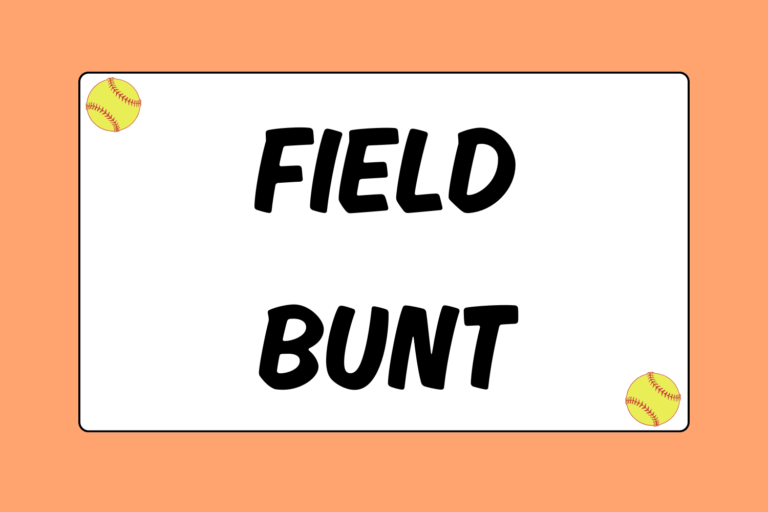If you think being a softball pitcher means just whipping your arm around in a circular motion, think again! Pitching is an art that needs to be appreciated and understood before it is attempted. This guide features an overview of the basics of pitching, and breaks the process down into sequencial stages.
Getting Set
Though most people think pitching is just about throwing the ball, the pitching process actually begins well before the wind-up. The first step is to get set on the mound — putting yourself in the right position to start a solid windmill:
1. Place Your Feet on the Mound
Before learning anything, you should know that there is no right (or wrong) way to get set, though there is an illegal way to do it; in most leagues, starting your pitch without having both feet on the mound is illegal. So long as you start with both feet on the mound, how you set your hands and rock is up to you. How you set your feet on the mound, on the other hand, is pretty standard:
- Front foot: If you are right-handed, your right foot will be forward and on the right side of the mound (vice versa if you are left-handed). Whichever foot is forward should be on the front edge of the rubber with the ball of your foot a little more than halfway on the mound.
- Back foot: Your back foot should be on the back edge of the opposite side of the mound. The entire ball of your back foot should be in contact with the rubber.
Your feet should wide enough apart to provide a strong and balanced base (about hip-distance). When you place your feet on the mound, the ball and your glove need to be separated. Stepping onto the mound with the ball in your glove is illegal.
2. Getting Your Hands Set
After your feet are on the mound, it’s time to get your hands set (that simply means putting the ball in your glove). There are a few different places to do this:
- In front of your chest
- Above your head
- At your waist
- Anywhere else you decide to
This part of the windup is highly subjective, so figure out what feels right to you. Whichever position you choose, make sure your glove covers the ball and your throwing hand grips it securely; you should remain set like this for one or two seconds. As you place the ball in your glove, shift your weight to your back foot, but keep your heels pointing straight back.
3. Rock Back
As you set your hands together, rocking back can give you some momentum to drive from when it’s time to propel yourself off the mound. When you rock back, continue placing more weight on your back leg; this will prepare you to lunge forward. This “rock” can be a slight movement, or a big one — it all depends on what is comfortable for you.
The Windup
Immediately prior to your windup–when the ball (and your throwing hand) is in the pocket of your glove–get the proper grip on the ball. Once you take your throwing hand (and ball) out of your glove, your windup starts. The windup, unlike your set motion, is pretty standardized and doesn’t change much from one pitcher to another.
1. Rock Forward & Start Your Windmill
When you put your hands together, you’ll have rocked back to give yourself some negative momentum. Upon taking the ball out of your glove, shift your weight to your lead foot as you rock and bend forward. The ball of your front foot should dip down and push against the front edge of the mound and the dirt. This (the front of the mound and the dirt) will give you something to drive off of. Your front foot should be pushing into the ground, just waiting to lunge off forward. This is an incredibly part of your lunge. As you bend forward, swing your throwing arm backward to initiate your windmill, or use your own unique way to prepare for the windmill.
2. Continue Your Windmill & Lunge Forward
After throwing your arm back, throw your arm forward in a windmill. Keep your wrist cocked back so that when your arm is extended over your head, the ball is facing away from you (this will help you snap). At this point, you should feel the natural urge to lunge forward. You cannot just step forward. You need to drive off the mound and lunge. When you lunge forward, your body needs to be perpendicular to the mound. This will allow your arm to pass your hips to snap the ball. Make sure your back foot remains in contact with the dirt.
Hot Tip: Lunge with a Purpose
In order to lunge far enough — not too far, but not too short — use a visual lunge line. From the front of the mound, count off six feet, heel-to-toe. On the sixth step, draw a line parallel to the mound through the instep of your sixth step. This is your lunge line. Lunging beyond this line may not allow you to close your hip hard enough or fast enough. However, falling short will likely take away potential velocity. You need to lunge hard off the mound during every pitch.
3. The Drag
As you lunge forward, your back foot will be dragging behind you. It is very important that you actively drag it forward. By dragging it forward, instead of allowing it to passively drag behind you, you will have a faster and stronger snap. Once your arm is nearing your hip, start dragging your foot even more forward. Always drag your toes, not the side of your foot; the latter could cause you to have a chicken scratch (kicking your drag foot behind you).
Hot Tip: Close the Back Hip
Many pitchers may not lunge hard enough off the mound or far enough, and instead step off the mound and kick their back foot behind them. This is called “chicken scratching.” Doing this can prevent you from closing your back hip, which helps supply your pitch with velocity. Always remember to lunge hard and close that back hip as you snap (not before!).
4. The Snap
Once your throwing hand nears your throwing-side hip, it’s time to snap and release the ball. As your hand is approaching your hip, close your hip. That means throwing your hip forward at the catcher to re-square your hips to the plate. When your hand is at your hip, snap your wrist and release the ball.
To throw the ball on a level plane, your snap needs to be sideways. Imagine that your hands were on the side of a cabinet door and you needed to close the cabinet door by flicking your wrist. This snap will allow the ball to roll off your fingertips on a level plane. Many pitchers snap upward, which gives the ball an upward spin and a high ball.
After you release the ball, your drag is done, so step your drag foot forward. You should end in a position that will allow you to field any ground ball: Feet in line about shoulder-width apart, and your hips, shoulders, and chest squared to the batter.
5. The Follow-through
After snapping and releasing the ball, your follow-through is crucial. Similar to the windup, most pitchers have a personalized follow-through. Some pitchers leave their hand near their hips. Some snap, and then curl their hand upward. Whatever you do, you have to be able to separate your snap and your follow-through.
If you curl your hand upward, you must do so after you snap. It must be completely separate. If you snap as you follow-through, your pitch may mimic your follow-through. For example, if you curl your arm upward and snap as you are following through, there is an incredibly high chance that your pitch will also spin upward.
If you are having trouble separating your snap from your follow-through, snap the ball and point to your target with your throwing hand immediately after. The ball should go straight into the mitt. This will help you focus on your snap before having a huge follow-through.
It Takes Time
Now that you have the fundamentals, you need to practice! Check out our pitching guides for details on warm-up drills and a practice routine you can use to bring your game to the next level.





